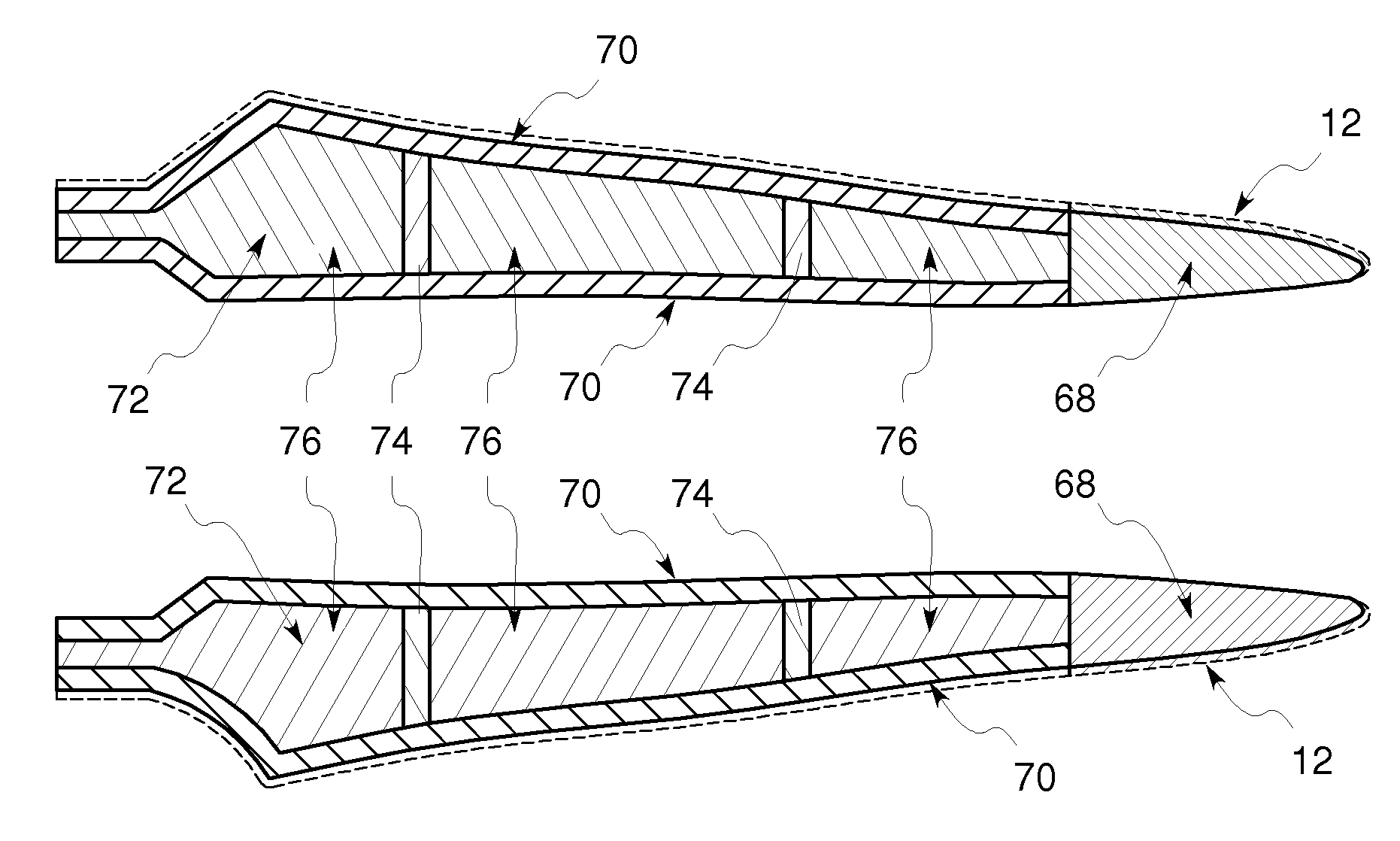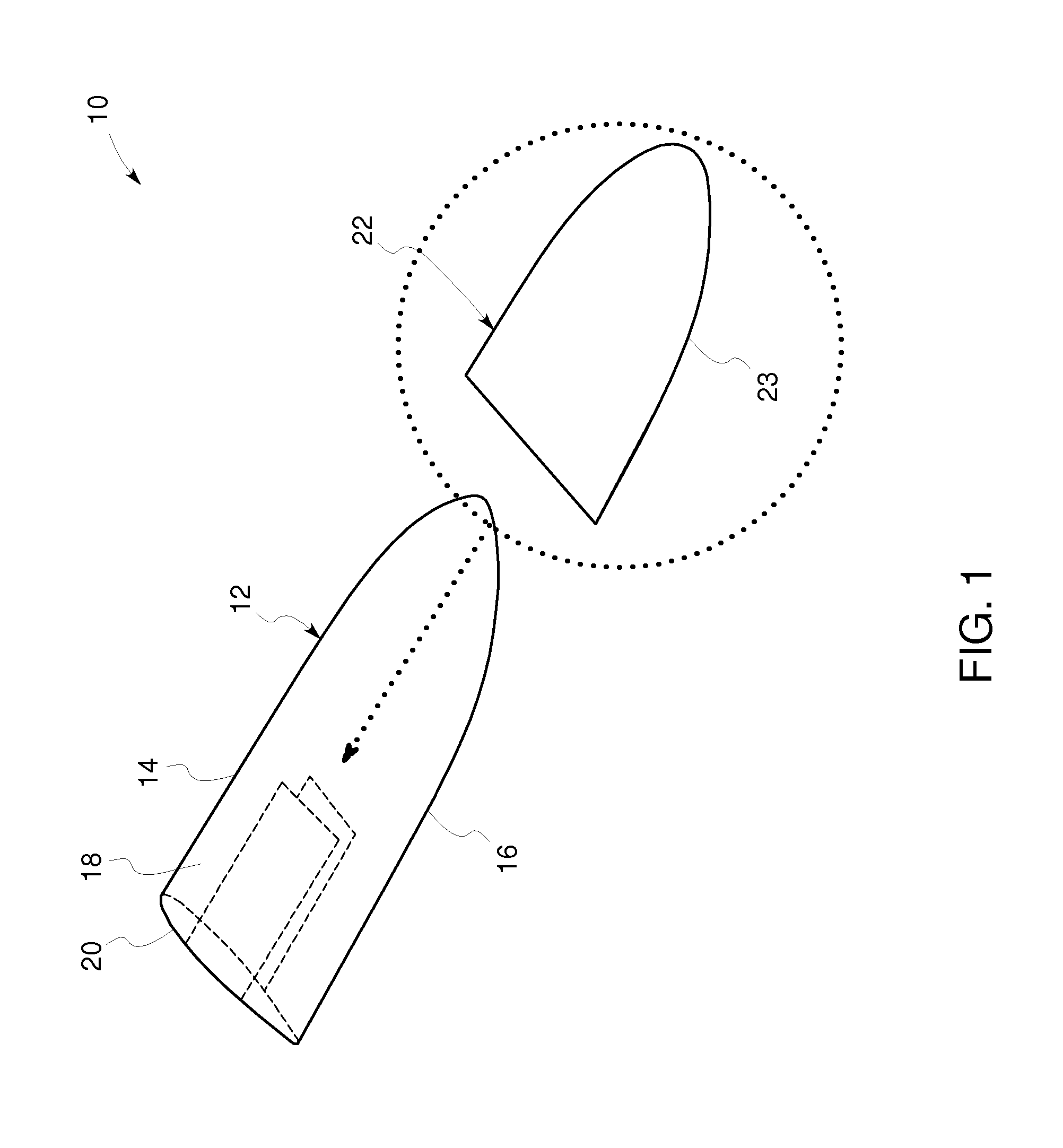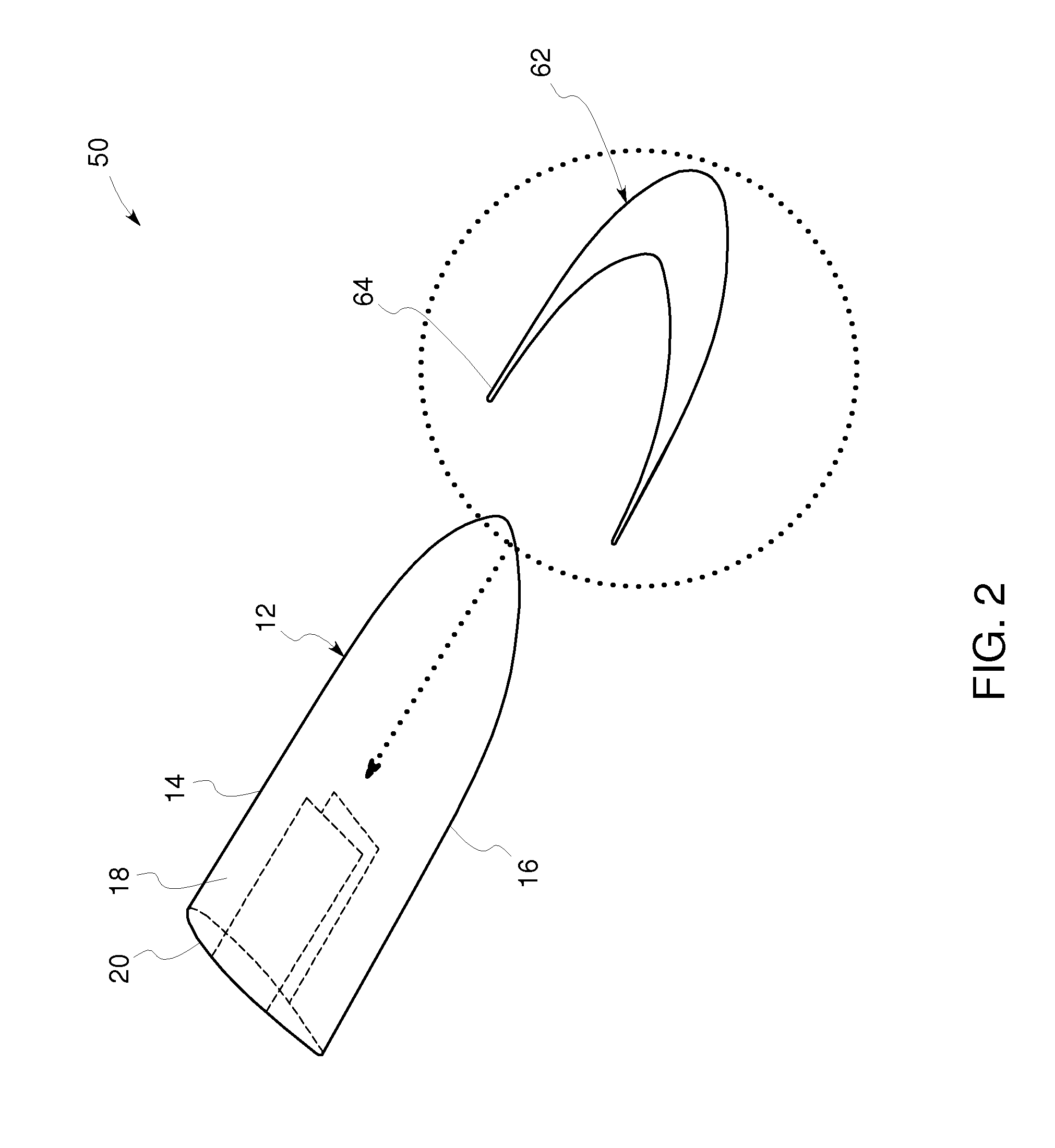Transversal conduction lightning protection system
a technology of transverse conduction and protection system, which is applied in the direction of aircraft static dischargers, wind energy generation, liquid fuel engine components, etc., can solve the problems of composite material partial to total destruction, multiple unprotected blades damaged or destroyed, and long downtime of the facility
- Summary
- Abstract
- Description
- Claims
- Application Information
AI Technical Summary
Benefits of technology
Problems solved by technology
Method used
Image
Examples
Embodiment Construction
[0018]FIG. 1 illustrates a wind turbine blade tip lightning protection mechanism 10 according to one embodiment of the invention. One portion of lightning protection mechanism 10 includes a substantially flat sheet, mesh or foil of electrically conductive or semi-conductive material 22 disposed in a tip region 12 of a wind turbine blade or aircraft wing (airfoil). According to one aspect of the invention, the wind turbine blade or aircraft wing is constructed from a predetermined glass-reinforced fiber or carbon-reinforced material. The wind turbine blade or aircraft wing may also comprise a down conductor such as described in further detail below disposed on or integrated with the blade or wing.
[0019]Lightning protection mechanism 10 is easily adapted to rotor blades that have already been installed, so called retrofitting. One portion of the rotor blade or aircraft wing includes a tip region 12, a suction side 18, a pressure side 20, a leading edge 14 and a trailing edge 16. Accor...
PUM
 Login to View More
Login to View More Abstract
Description
Claims
Application Information
 Login to View More
Login to View More - R&D
- Intellectual Property
- Life Sciences
- Materials
- Tech Scout
- Unparalleled Data Quality
- Higher Quality Content
- 60% Fewer Hallucinations
Browse by: Latest US Patents, China's latest patents, Technical Efficacy Thesaurus, Application Domain, Technology Topic, Popular Technical Reports.
© 2025 PatSnap. All rights reserved.Legal|Privacy policy|Modern Slavery Act Transparency Statement|Sitemap|About US| Contact US: help@patsnap.com



